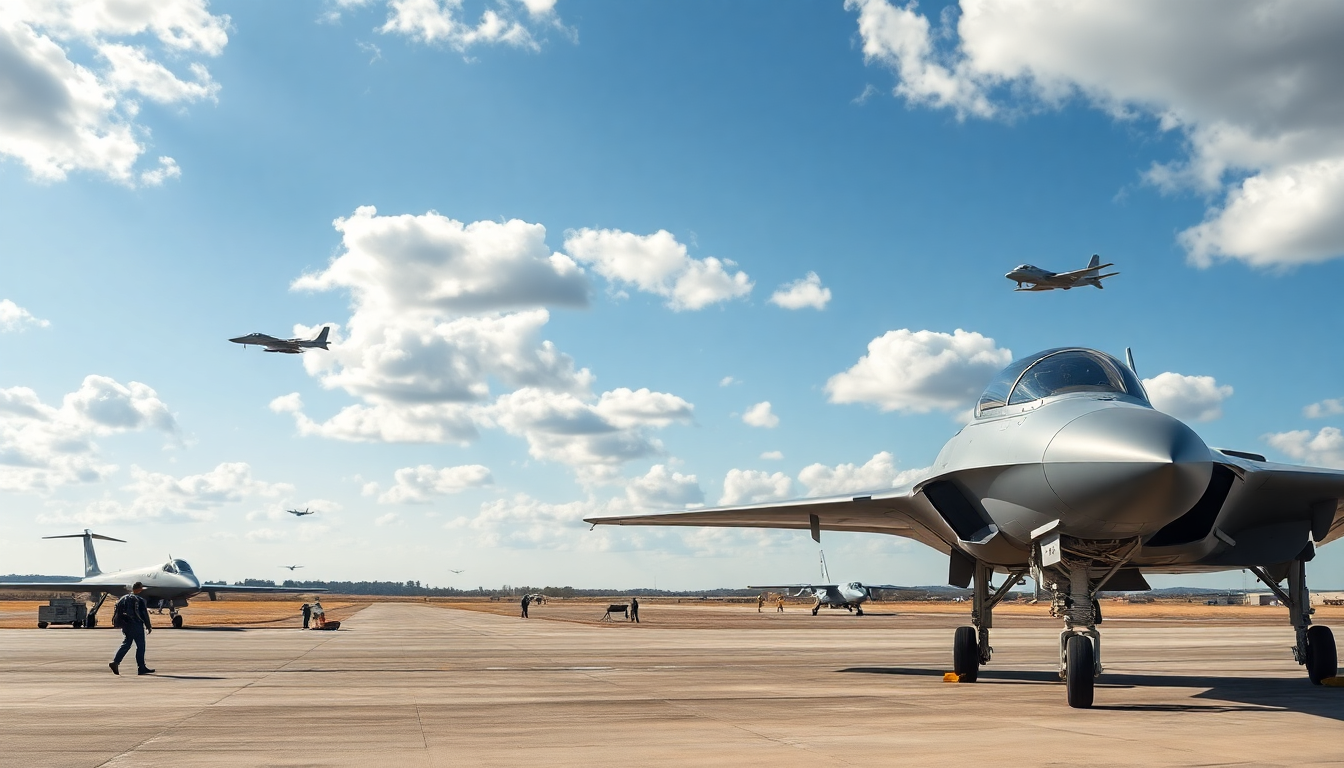Table of Contents
In today’s rapidly evolving battlefield, the U.S. military is facing a crucial decision about its air combat future. With huge investments pouring into cutting-edge aircraft and autonomous tech, a key question is emerging: should we keep placing pilots in cockpits, or is it finally time to go all-in on unmanned systems? The recent buzz around Ukraine’s drone strikes has reignited this debate, pushing military leaders to rethink what aerial combat really looks like.
The Current State of U.S. Defense Technology
The Pentagon is diving deep into sixth-generation fighter programs, aiming to boost stealth, speed, and overall combat effectiveness. These efforts reflect a larger ambition to maintain air superiority in a world that’s becoming increasingly competitive. But with advancements in autonomous drones and artificial intelligence happening at lightning speed, some defense experts are questioning whether we really need human pilots in the cockpit for future battles.
For years, manned aircraft have been the backbone of military air strategy. However, some insiders believe that programs like the F-35 should be the last of their kind. They argue that unmanned systems could do these jobs more efficiently and safely. Take the RQ-4 Global Hawk drone, for instance—it’s been a game-changer in surveillance and reconnaissance, highlighting the potential of unmanned technology in modern warfare.
The Manned vs. Unmanned Aircraft Debate
The discussion over whether to favor manned or unmanned aircraft is pretty polarized within military circles. Supporters of unmanned systems tout their ability to operate without risking pilot lives, offering a significant strategic edge. On the flip side, many pilots and defense officials argue that having humans in the loop is essential for making smart decisions in high-pressure combat scenarios.
Retired military leaders emphasize the need for a ‘quarterback’ in the sky—someone to coordinate complex operations and weave together information from various unmanned assets into a unified battle management strategy. While some believe that unmanned technology will eventually take on this role, others warn that our current networks and AI capabilities aren’t quite reliable enough for such critical tasks.
As former U.S. Air Force Lt. Gen. David Deptula points out, financial constraints are also a big part of this conversation. With the Air Force reportedly becoming the smallest and least prepared it’s ever been, budget decisions are shaping the future of sixth-generation aircraft development.
Strategic Implications for Future Conflicts
The changing dynamics of global conflicts call for a fresh look at how the U.S. projects its power. As military strategies evolve, a pressing question remains: will the Air Force and Navy sync up their approaches to unmanned technology? While the Air Force seems eager to push forward with the F-47 program, the Navy might take a more cautious route, waiting to gather more insights on unmanned capabilities.
This difference in strategy could have major implications for how the U.S. navigates future conflicts. Incorporating unmanned systems into existing operations could boost efficiency, but it’s essential to remember that human expertise is irreplaceable in complex combat situations.
In the end, the ongoing dialogue about manned versus unmanned warfare highlights the need for a forward-thinking military strategy. As technology advances, the U.S. must gear up for a future where the roles of pilots and drones aren’t just complementary but are fundamentally redefined in the context of modern warfare. Are we ready for that shift?


